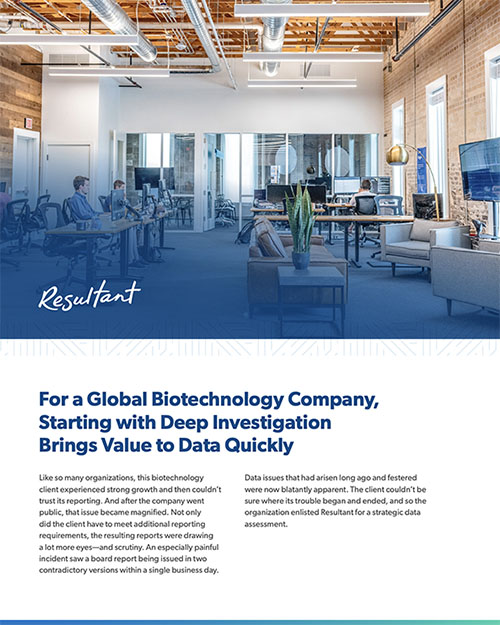The assessment process may be incredibly customized, but the result is typically the same: The client becomes enamored of the possibilities data provides. They think differently—holistically. That was the case here, as well.
For example, the client was thrilled to be able to grab all of the numbers from its town hall meetings and break them down so they can execute on the details of revenue goals quite granularly. Previously, they simply didn’t have the data. Now that the data is clean, collectible, and primed for analysis, the client can execute real data science, providing various potential paths for reaching objectives.
The data mesh approach gave us more freedom around both federated and product data, so we could more quickly help the client move past their Excel sheets and break down data silos without disrupting day-to-day operations.
Data governance doesn't have to be difficult.
Find out more




